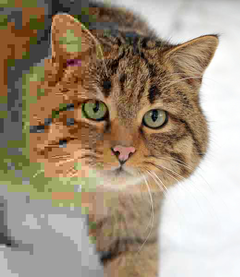Here are more revision notes for the Web Design Fundamentals unit. Please see the revision notes on Design and HTML as well.
W3C
The W3C is the World Wide Web Consortium. It sets standards for HTML and other key web technology. This means that all browsers know that you want your text bold when you use <strong> and that everyone who uses HTML knows to use <a href=…> to add a web link.
Copyright and Creative Commons
Creative Commons is a nonprofit organization that enables the sharing and use of creativity and knowledge through free legal tools.
The free, easy-to-use copyright licenses provide a simple, standardized way to give the public permission to share and use your creative work — on conditions of your choice. CC licenses let you easily change your copyright terms from the default of “all rights reserved” to “some rights reserved.”
![]() Attribution means:
Attribution means:
You let others copy, distribute, display, and perform your copyrighted work – and derivative works based upon it – but only if they give you credit.
![]() Noncommercial means:
Noncommercial means:
You let others copy, distribute, display, and perform your work – and derivative works based upon it – but for noncommercial purposes only.
![]() No Derivative Worksmeans:
No Derivative Worksmeans:
You let others copy, distribute, display, and perform only verbatim copies of your work, not derivative works based upon it.
![]() Share Alike means:
Share Alike means:
You allow others to distribute derivative works only under a license identical to the license that governs your work.
Definitions from Flickr CC
If you can’t get permission to use an image you could always make your own image – take a photo or use a paint package or scan a drawing. The same goes for sound effects and music – it’s great fun recording your own sound effects
Intellectual Property
“Intellectual Property is work or invention that is the result of creativity, such as a manuscript or a design, to which one has rights and for which one may apply for a patent, copyright, trademark, etc”
Definition from Google Dictionary
You should make sure you always cite your sources. This is telling people where you have got text or images from so that they can go and find out more.
Accessibility
Some people with visually imparements use screen readers to read aloud everything that is written on a web site. It is important that you put ‘Alt’ tags (alternative text) on your images so that they can get a description of that is in the image.
It is also useful if you put the most important content and links near the top of your web page so that they don’t have to listen to the rest of your page to find the link or information they need.
File formats
Image files:
- .jpg / .jpeg – a compressed image format that is generally 10% smaller than the uncompressed file. It is lossy, which means there is a reduction in the image quality when it is compressed. This happens every time you save, which is why you should always keep your original files
- .gif – good for clipart and other drawings. Good for animated gifs.
- .png – best for drawings and illustrations with text
Here’s a great description of difference between jpg, png and gif (and a cool cartoon)
Sound files:
- .mp3 – smaller compressed file. Lossy (there’s a loss in sound quality when the file is compressed)
- .wav – large uncompressed file, lossless (there’s no loss in quality)
- .aiff – large uncompressed file, similar size to WAVs but better quality. Lossless (there’s no loss in quality)
- .aac – AAC files are generally higher quality (less quality loss) and slightly smaller than MP3 files of the same song
Description of differences between different audio file formats
Video files:
- .avi – AVI can be played in most Windows-based applications like Windows Media Player
- .mp4 – MP4 is mostly used with many personal media players like iPod and PSP. At the same file size, MP4 files have a better video quality then AVI files
- .mov – a Quicktime movie file
Other files:
- .htm / .html – a web page with text and markup to allow formatting, links, images, videos etc. HTML stands for HyperText Markup Language.
- .swf – Adobe Flash file, like a game or animation
